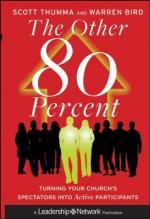Your most affectionate Friend
and Servant,
John Shallow, Esq.
In compliance with Esquire Shallows Request, I design this Paper as a Dissertation upon the Cat-call. In order to make myself a Master of the Subject, I purchased one the Beginning of last Week, though not without great difficulty, being informd at two or three Toyshops that the Players had lately bought them all up. I have since consulted many learned Antiquaries in relation to its Original, and find them very much divided among themselves upon that Particular. A Fellow of the Royal Society, who is my good Friend, and a great Proficient in the Mathematical Part of Musick, concludes from the Simplicity of its Make, and the Uniformity of its Sound, that the Cat-call is older than any of the Inventions of Jubal. He observes very well, that Musical Instruments took their first Rise from the Notes of Birds, and other melodious Animals; and what, says he, was more natural than for the first Ages of Mankind to imitate the Voice of a Cat that lived under the same Roof with them? He added, that the Cat had contributed more to Harmony than any other Animal; as we are not only beholden to her for this Wind-Instrument, but for our String Musick in general.
Another Virtuoso of my Acquaintance will not allow the Cat-call to be older than Thespis, and is apt to think it appeared in the World soon after the antient Comedy; for which reason it has still a place in our Dramatick Entertainments: Nor must I here omit what a very curious Gentleman, who is lately returned from his Travels, has more than once assured me, namely that there was lately dug up at Rome the Statue of Momus, who holds an Instrument in his Right-Hand very much resembling our Modern Cat-call.
There are others who ascribe this Invention to Orpheus, and look upon the Cat-call to be one of those Instruments which that famous Musician made use of to draw the Beasts about him. It is certain, that the Roasting of a Cat does not call together a greater Audience of that Species than this Instrument, if dexterously played upon in proper Time and Place.
But notwithstanding these various and learned Conjectures, I cannot forbear thinking that the Cat-call is originally a Piece of English Musick. Its Resemblance to the Voice of some of our British Songsters, as well as the Use of it, which is peculiar to our Nation, confirms me in this Opinion. It has at least received great Improvements among us, whether we consider the Instrument it self, or those several Quavers and Graces which are thrown into the playing of it. Every one might be sensible of this, who heard that remarkable overgrown Cat-call which was placed in the Center of the Pit, and presided over all the rest at [the [2]] celebrated Performance lately exhibited in Drury-Lane.




